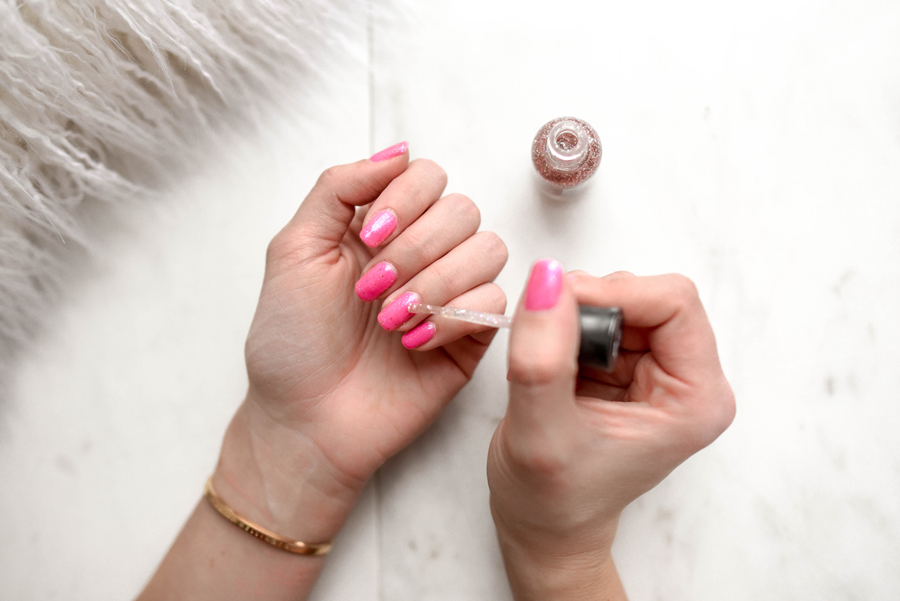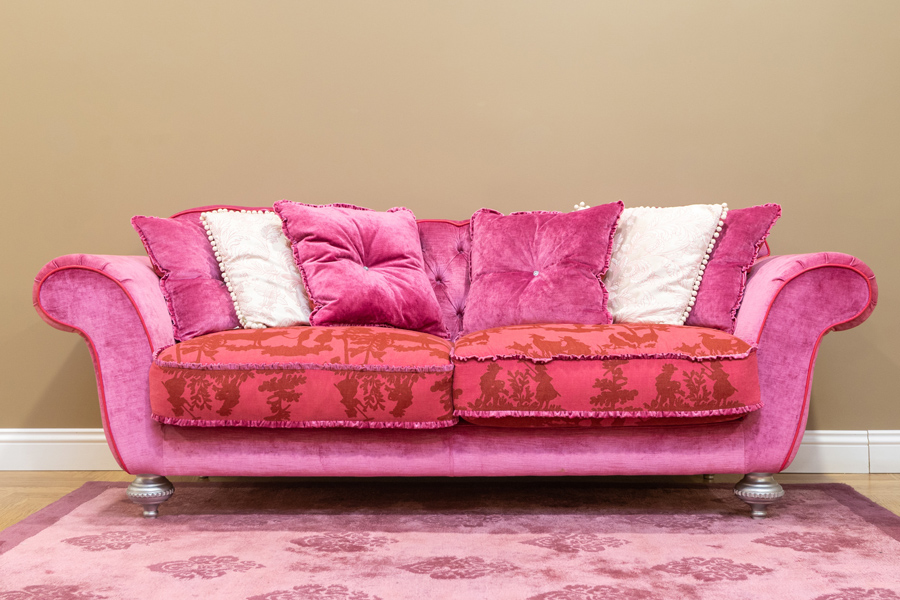Do you ever find yourself humming the Friends theme song? Or glance in your closet and realize you’ve become a “Coastal Grandma?” Blame pop culture! The influence of movies and music on our clothing choices, color trends, and even home décor is undeniable, if not inevitable.
Nearly 40% of people are inspired by what they see in the media when it comes to making design changes in their home, according to a recent report on home trends.
Take “Barbie Pink” as a current example. Though the record-breaking movie hit theaters in July of 2023, the influence started a full year earlier. Known as “Barbiecore,” the playful, bright-pink aesthetic made its explosive debut in fashion and home decor in June of 2022 when shots of Margot Robbie in the role of Barbie were first released.
“Despite long being associated with submission and passivity, the color pink has been reclaimed, symbolizing subversiveness—which is embraced in the new Barbie film,” journalist Clare Thorp recently wrote.
- Clare Thorp
Barbie nostalgia is even going past the pink to inspire whimsical silhouettes and vintage pieces in both clothing and home décor. From red carpets and royals to street clothing, paint colors and textiles, there is no end in sight for the Barbie aesthetic.
While we ponder what popular colors or styles pop culture will influence next, we look to our past for some clues—with a side of nostalgia.

1980’s
While “Barbie Pink” is everywhere today, back in the ’80s, it was Pretty in Pink and the other John Hughes teen movies that captured the style of the generation. Vintage items, lace, pale pink, and layering went mainstream, and individual style (ala Duckie) was admired.
Pop icons like Madonna, Andy Warhol, Michael Jackson, and Princess Diana each influenced the decade’s fashion and interior design in their own unique ways. High fashion, the birth of the Supermodel, and larger-than-life styles were everything. The 80’s pop-art style furniture and interior design was bright and eclectic, echoing the youthful and vibrant style of the culture and creating energy in any space it occupied.
1990’s
Nineties fashion is having a resurgence, as evidenced by the denim overalls, miniskirts, and cropped cardigans seen on today’s fashionistas. Fashion in the 1990s was highly influenced by the new musical genres of time—alternative, grunge, boy bands, bubblegum pop, R&B, and hip hop. From the high-end designer looks adopted in Clueless to the baggy hoodies and jeans worn in Juice, 1990s flicks brought new styles to the masses
During “the ultimate age of the family sitcom,” nineties kids wanted to live like their sitcom heroes. Kids begged their parents for a bright red, yellow, and blue primary-colored bedroom (just like DJ Tanner on Full House). Adults delighted at sponge-painted pastel walls, and it seemed like every living room had the ubiquitous plaid or floral couch (see Roseanne, Golden Girls, and again, Full House).

2000’s
Which other decade can claim a world-wide feared computer bug and a same-named fashion aesthetic? Of course, we’re talking about Y2K. With its futuristic and slightly retro edge, the Y2K aesthetic became popular during the dot-com boom as people were optimistic and cautious about the future and how tech could transform our lives.
Gen-Z is capitalizing on the best of the bygone era today. Y2K dressing means taking certain elements of 2000’s fashion – Britney Spears- and Legally Blonde-inspired plaid miniskirts, crop cardigans, and baby tees – and styling them in a thoroughly modern way.
Shabby chic interiors were the anecdote to the edgy fashion of the time. We are talking distressed-white, vintage-looking furniture; pale colors; simple and comfortable fabrics; and antiques. When celebs started showing off the style in their impeccably designed homes on shows like MTV’s Cribs, it took the look to homes across America.
2010’s
An expression of burgeoning social ideas that included inclusivity, sustainability, and gender neutrality, the styles of 2010 ranged from minimalistic to vibrant. Incorporating bold patterns, bright colors, and unique materials and textures, people began to experiment once again with individual style. Remember Lady Gaga’s meat dress?
Around the mid-2010s, a light rosy shade known as Millennial Pink emerged. Entire retail stores and restaurants were draped in the hue. “The quieter Millennial Pink reflects the much more gender-fluid, self-aware atmosphere that Millennials have fostered and embraced,” wrote Ellen Gutoskey. It took the design world by storm and has yet to relinquish its hold—or maybe it’s just come full circle with the popularity of today’s Barbie Pink.
History has proven that our fashion, color, and style trends will always be heavily influenced by pop culture. At this point, we’re all looking forward to seeing what comes after pink.
Check out the story behind another popular pink, the 2023 Pantone Color of the Year: Viva Magenta.





